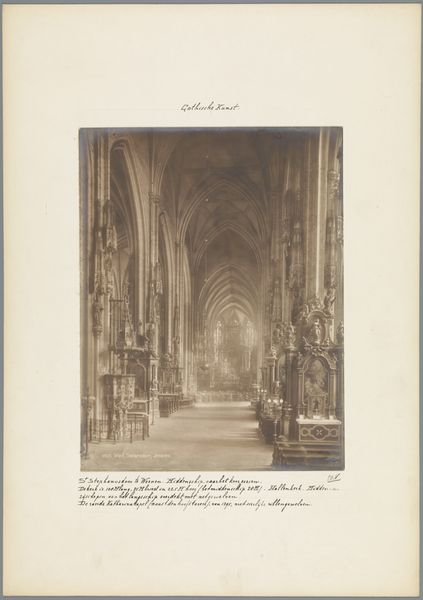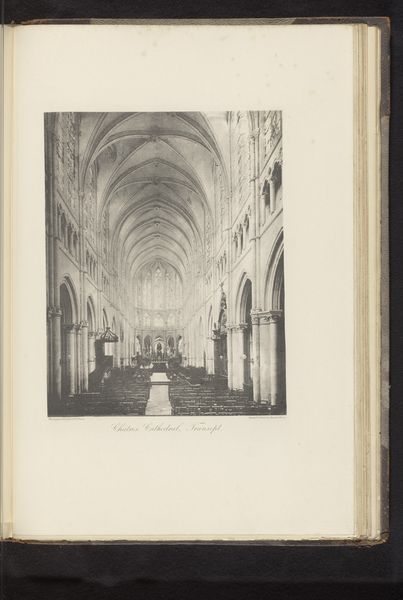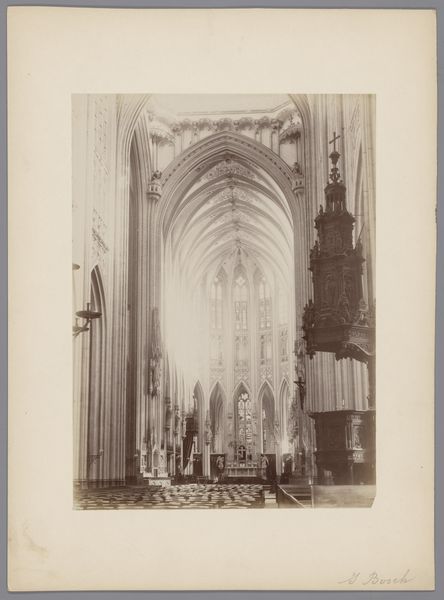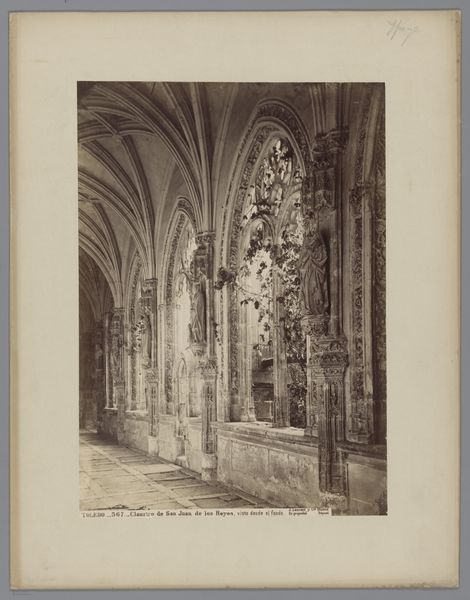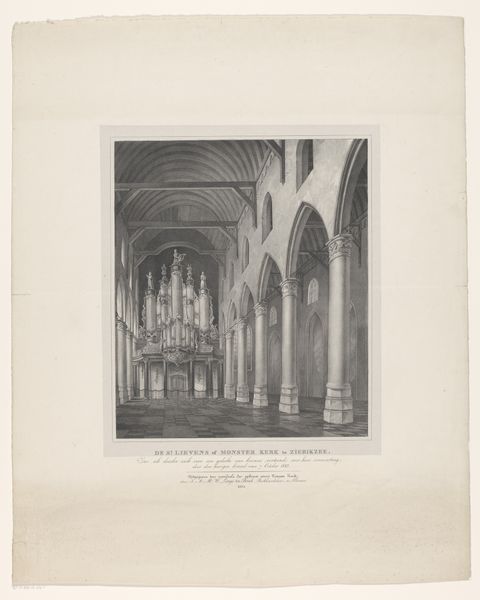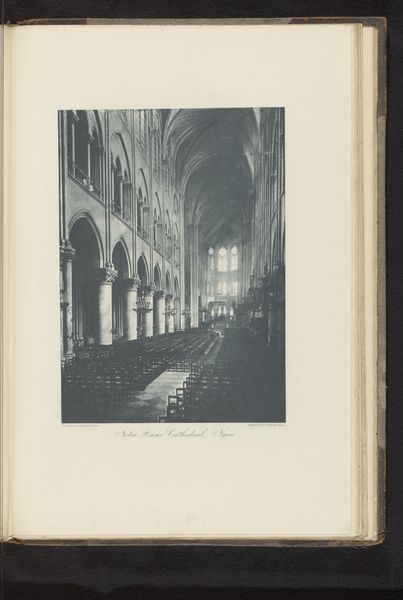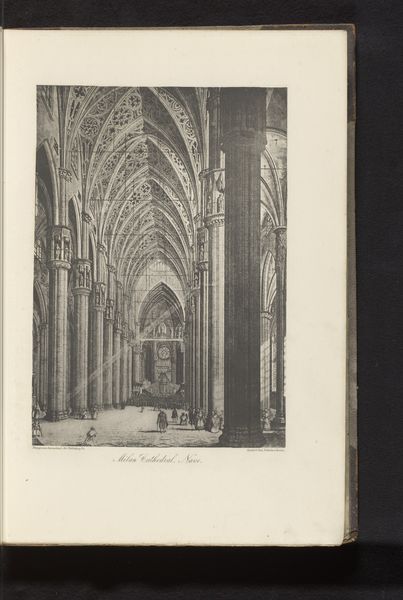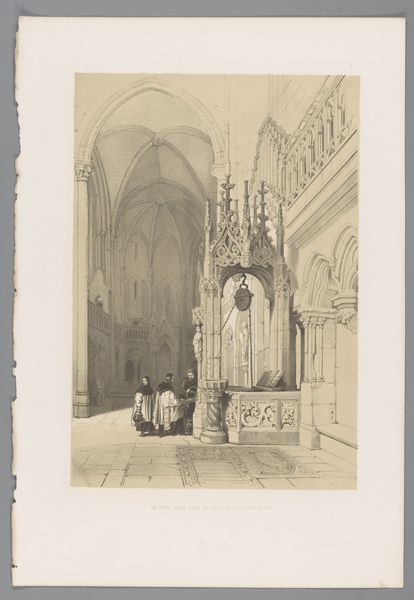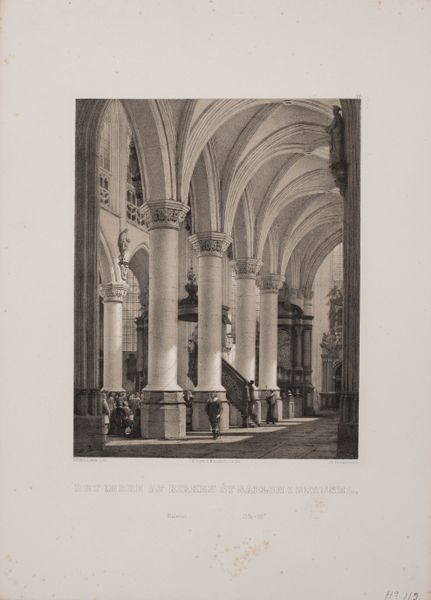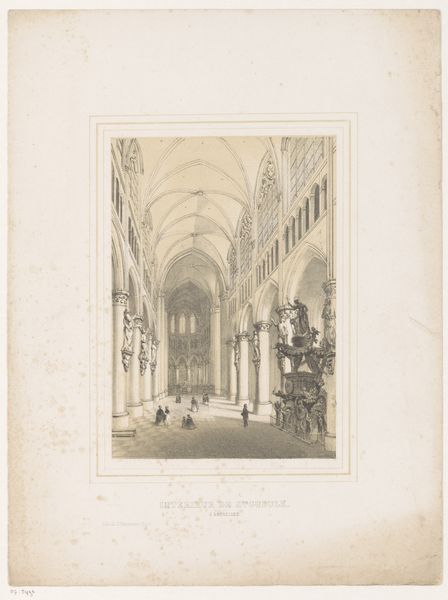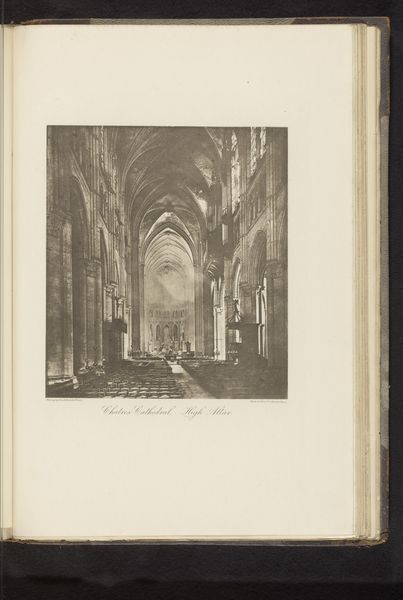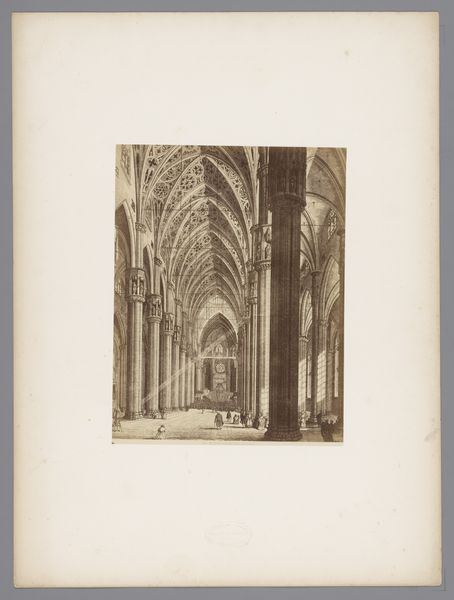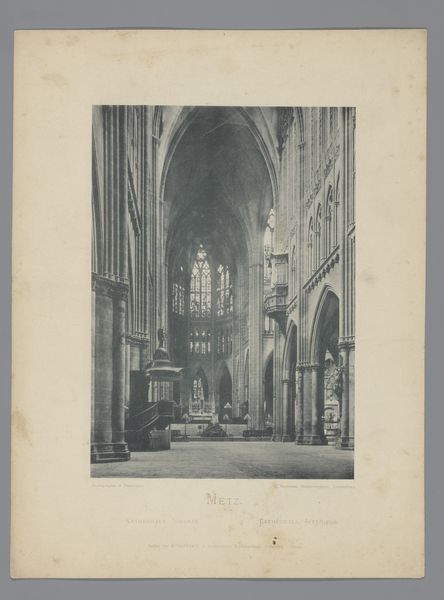
Interieur van de kerk Saint-Étienne te Beauvais, met zicht op het koor c. 1875 - 1900
0:00
0:00
photography, site-specific, gelatin-silver-print
#
landscape
#
photography
#
site-specific
#
gelatin-silver-print
#
realism
Dimensions: height 266 mm, width 204 mm
Copyright: Rijks Museum: Open Domain
Curator: Immediately striking is the perspective—almost swallowed by the vaulted ceilings! Editor: Here we see Neurdein Frères’ “Interior of the Saint-Étienne Church in Beauvais, with a view of the Choir,” a gelatin silver print likely made between 1875 and 1900. What does that perspective achieve for you? Curator: The convergence of lines draws the eye relentlessly to the altar. It’s a powerful display of scale, isn’t it? A rather grand, albeit sepia-toned, religious experience is conveyed through these gradations. I think the emphasis is on how our positionality as viewers defines the impact of sacred spaces. Editor: Precisely! Look closer. Notice how the photographic process itself—the specific chemistry and darkroom techniques—helped shape the image's reception and mass consumption. Early photography made places such as the Saint-Étienne Church newly available for the rising middle classes in Europe who may have otherwise lacked access. This technology became both a means of production, a site of leisure, and even status symbol. Curator: Certainly the mechanics enabled that expanded access. The subtle variations in light across the stone and wood are marvelous though, aren’t they? How light models the ornamentation…the gothic tracery against solid material... Editor: Well, beyond pure appreciation, the repetitive forms indicate standardized labor involved in reproducing architectural photography and making these faraway destinations tangible to a broader audience through the development and commodification of affordable photography. How are workers impacted, and in turn influencing how viewers perceive these cultural institutions. Curator: Perhaps we can see the convergence of mass appeal and timelessness in this image, after all. Editor: Ultimately it presents questions rather than concrete conclusions about social conditions and production processes in relation to visual perception.
Comments
No comments
Be the first to comment and join the conversation on the ultimate creative platform.
